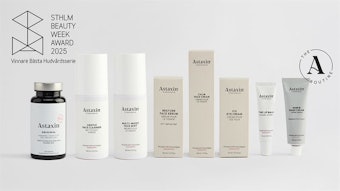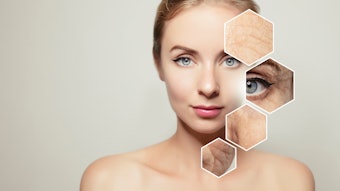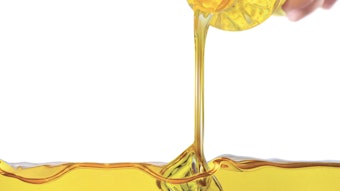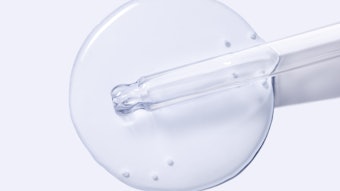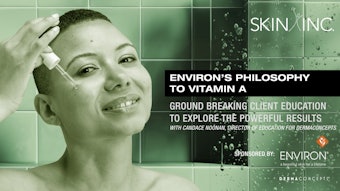
With millions of people seeking treatment for skin discolorations annually, it is no surprise that the professional skin care industry is overflowing with products that boast skin-lightening and -brightening benefits.
Hyperpigmentation is the result of melanin overproduction, either UV-induced, due to sun exposure and tanning beds; hormonally induced, due to melasma; or through post-inflammatory cutaneous trauma. Hyperpigmentation also can be a side effect of Addison’s and Cushing’s diseases, linea nigra, celiac disease and more.
Fortunately, there are many ingredients that are proven to be not only safe, but also quite effective at suppressing the production and deposition of unwanted melanin. Because age, lifestyle choices, genetics and the environment all play roles in the development of hyperpigmentation, choosing products that contain blends of several pigment-inhibiting ingredients instead of single-ingredient formulations will provide the versatility necessary to treat a wide variety of clients and types of hyperpigmentation.
Very rarely are conditions treated one at a time; for example, a client with rosacea may also have hyperpigmentation; an aging client may suffer from melasma; and higher Fitzpatrick skin types with acne typically also have residual post-inflammatory hyperpigmentation (PIH). Therefore, when choosing skin brighteners, the ancillary benefits of certain skin-brightening ingredients should also be considered.
Cost may be a factor, too, because not everyone can afford—or may be reluctant—to purchase multiple products initially. Skin care professionals must be able to help those who can afford to purchase only one product. Again, choosing products containing blends of ingredients with multiple benefits provides a better opportunity to improve the health of the client’s skin with as few as one product.
Mastering Melanogenesis
Having a solid understanding of melanogenesis—the process by which pigment is produced and deposited—is critical to effective ingredient selection and successful treatment. Melanogenesis is a chain of multiple chemical events within the skin that begins with an inflammatory or hormonal stimulus that instigates the release of melanocyte-stimulating hormones (MSH). Then, within the melanocyte, the enzyme tyrosinase is released from the rough endoplasmic reticulum (RER) and acts on the amino acid tyrosine to convert it to L-DOPA. Next, tyrosinase binds with copper and acts on the L-DOPA, converting it into dopaquinone, resulting in the formation of melanosomes, or “packets” of pigment. These melanosomes are transported along the dendrites (arms) of the melanocyte and transferred into the keratinocyte, creating an umbrellalike pattern to protect the DNA within the cell, resulting in hyperpigmentation.
Melanogenesis Inhibitors
To effectively prevent and correct hyperpigmentation, it is best to use a variety of topical ingredients that address different points within this chain.
Azelaic acid. This is found naturally in castor beans and many grain products. It is also effective in treating hyperpigmentation, because it inhibits the growth of melanocytes and exerts cytotoxic action on melanocytes without negatively affecting the surrounding healthy cells. It also suppresses the production of the enzyme tyrosinase and is a mild exfoliant, which helps to normalize keratinization in the skin. This antibacterial ingredient is available in higher prescription strengths for rosacea and acne treatment medications.
Glycyrrhiza glabra (licorice root extract). This is used in many product formulations with the capability to suppress the tyrosinase activity of melanocytes without cytotoxicity, making it another highly safe and effective skin-brightening ingredient. Licorice root extract also is effective in treating breakout-prone skin, because it suppresses 5-alpha reductase, the enzyme responsible for increased sebum production. Licorice also has demonstrated effective anti-inflammatory properties.
Hydroquinone. This is the only U.S. Food and Drug Administration (FDA)-approved skin-lightener, and is considered safe and effective. It works by destroying malfunctioning melanocytes without harming normally functioning cells. There has been continuing controversy surrounding the topical use of this ingredient, primarily due to incomplete or incorrect information suggesting that hydroquinone causes cancer. Contrary to the belief of some, hydroquinone is not banned in Europe, Canada or other countries; it is simply more tightly regulated and typically available only by prescription. In the United States, however, products formulated with 2% hydroquinone or less are still available as over-the-counter (OTC) drugs, while percentages from 4% and above require a prescription.
When used as directed, these OTC percentages have not been associated with any negative health effects. It is important to acknowledge that most people ingest hydroquinone every day by consuming coffee, tea, wheat and berries without ill effects. There have been multiple studies performed with hydroquinone, and the carcinogenic effects that are cited, on the Internet and elsewhere are based on tests involving high doses of pure hydroquinone fed to or injected into mice and rats. Clearly, this is not the intended use of this ingredient. The outcomes of these types of studies cannot be correlated with the topical use of lower percentages of hydroquinone. The dermatology community strongly believes that the FDA’s final decision and its studies will ultimately confirm the safety of hydroquinone.
Kojic acid. This is produced by several types of fungi and was first discovered in Japan in approximately 1989. Kojic acid’s function as a skin brightener is due to its metal chelating properties. During the melanogenesis process, tyrosinase binds with copper to catalyze the production of melanin. Kojic acid is able to chelate this copper away from tyrosinase, rendering this point of the pigment pathway ineffectual. Kojic acid also can decrease the number of melanocytic dendrites on a melanocyte—melanin-producing cells, and the quantity of melanosomes released. The ancillary antibacterial properties of kojic acid make it an effective ingredient in the treatment of breakouts, as well as the resultant PIH.
L-ascorbic acid (vitamin C). This is a unique and highly beneficial ingredient in treating hyperpigmentation. This multifunctional ingredient is ideally used daily, preferably in the morning due to its protective benefits against UV-induced oxidative stress on the skin. L-ascorbic acid is the only bioavailable form of vitamin C, and has been proven not only to convert L-DOPA back into dopaquinone in the pigment pathway, but it also protects from UV exposure, functions as a powerful antioxidant, stimulates collagen deposition and has been shown to increase epidermal thickening. Other types of vitamin C used in topical products—such as ascorbyl palmitate and other vitamin C esters—supply antioxidant protection, but not vitamin C’s other anti-aging and pigment-inhibiting benefits. This is primarily because the skin’s slightly acidic environment is unable to break the covalent bonds to free the L-ascorbic acid from the substance to which it is bound in the ester.
Lactic acid. This is found naturally in milk and sugars, and is an alpha hydroxy acid (AHA) that has been used in topical formulations for decades. AHAs are hydrophilic and assist with exfoliation by breaking down the bonds between cells, known as desmosomes. In general, AHA and superficial chemical peels are crucial to lifting hyperpigmentation, because increasing exfoliation will lead to faster, more dramatic results. Lactic acid is particularly important to skin-brightening formulations due to its ability to inhibit the enzyme tyrosinase, making it an effective melanogenesis-inhibitor. In addition, lactic acid provides antibacterial and hydrating properties.
Retinoids. These represent all members of the vitamin A family, and are essential for any skin type or condition. There are many formulations available: prescription tretinoin products; gentler formulations utilizing pure retinol; and retinol complexes—blends of retinol, retinol esters and other support ingredients. Although retinoic acid is, in fact, the most bioavailable form of vitamin A, not all clients are able to tolerate its use due to its potential for irritation. In these instances, a retinol complex or a 0.5% pure retinol would be good options, depending upon the client’s sensitivity level. These forms of vitamin A are converted into retinoic acid within the skin, delivering the benefits without the irritation of a topical retinoic acid. Retinoids have been proven to suppress the melanosome transfer that takes place during melanogenesis, stimulate matrix protein production, provide antioxidant protection, increase cellular turnover and exfoliate the surface of the skin. Retinoid products should be used at night for best results, and daytime SPF use is critical to protect the skin from heightened UV sensitivity.
Credible Science
With many products from which to choose, consider carefully the needs of your clients for optimal results. Developing a deeper understanding of the unique mechanisms of action of effective brightening ingredients simplifies product selection for not only skin care professionals, but also their clients. Ongoing research and scientific studies are underway to identify and substantiate the efficacy of existing and novel ingredients for the treatment of hyperpigmentation and overall skin brightening. The science and chemistry around the creation of innovative solutions continues to advance, and many new options are certain to arise. By always relying on credible science when selecting blends of brightening ingredients, success in achieving all hyperpigmentation clients’ skin care goals will be within reach.
Jennifer Linder, MD, is a dermatologist and Mohs micrographic skin surgeon, serving as CSO for PCA Skin. She holds a clinical faculty position in the department of dermatology at the University of California, San Francisco; is a spokesperson for The Skin Cancer Foundation; and is a member of the American Academy of Dermatology (AAD), the American Society for Dermatologic Surgery (ASDS), and the American College of Mohs Micrographic Surgery and Cutaneous Oncology (ACMMSCO).
